A Surface-Scattering-Based Composite Optical Waveguide Sensor for Aerosol Deposition Detection
Abstract
:1. Introduction
2. Theory and Simulation
3. Materials and Methods
3.1. Fabrication of the COWG
3.2. Construction of the Experimental Setup
4. Results and Discussion
4.1. Methodology Validation
4.2. Effect of Water Droplet Deposition
4.3. Responses of the COWG Scattering Sensor to Aerosol Salt Deposition
5. Conclusions
Author Contributions
Funding
Institutional Review Board Statement
Informed Consent Statement
Data Availability Statement
Conflicts of Interest
References
- Kabir, E.; Azzouz, A.; Raza, N.; Bhardwaj, S.K.; Kim, K.; Tabatabaei, M.; Kukkar, D. Recent advances in monitoring, sampling, and sensing techniques for bioaerosols in the atmosphere. ACS Sens. 2020, 5, 1254–1267. [Google Scholar] [CrossRef]
- Gupta, D.; Eom, H.-J.; Cho, H.-R.; Ro, C.-U. Hygroscopic behavior of NaCl–MgCl2 mixture particles as nascent sea-spray aerosol surrogates and observation of efflorescence during humidification. Atmos. Chem. Phys. 2015, 15, 11273–11290. [Google Scholar] [CrossRef] [Green Version]
- Guo, L.; Gu, W.; Peng, C.; Wang, W.; Li, Y.J.; Zong, T.; Tang, Y.; Wu, Z.; Lin, Q.; Ge, M.; et al. A comprehensive study of hygroscopic properties of calcium-and magnesium-containing salts: Implication for hygroscopicity of mineral dust and sea salt aerosols. Atmos. Chem. Phys. 2019, 19, 2115–2133. [Google Scholar] [CrossRef] [Green Version]
- Farghadan, A.; Poorbahrami, K.; Jalal, S.; Oakes, J.M.; Coletti, F.; Arzani, A. Particle transport and deposition correlation with near-wall flow characteristic under inspiratory airflow in lung airways. Comput. Biol. Med. 2020, 120, 103703. [Google Scholar] [CrossRef] [PubMed]
- Yu, S.; Wang, J.-Z.; Sun, X.-Z.; Liu, Y.-X. Numerical analysis on deposition of particulate matters in respiratory tract. J. Med. Biomech. 2016, 31, 193–198. [Google Scholar]
- Maierhofer, P.; Buchberger, A.; Breitegger, P.; Bergman, A. Optical aerosol sensing-from air quality to global warming. Appl. Ind. Opt. 2019, 7, 8–10. [Google Scholar]
- Chavez, R.; Orea, D.; Choi, B.; Nguyen, T.D.; Anand, N.K.; Hassan, Y.; Sabharwall, P. An experimental study of solid and liquid aerosol transport in a horizontal square channel. Aerosol Sci. Technol. 2020, 54, 1399–1423. [Google Scholar] [CrossRef]
- Fischer, F.; Andris, A.; Lippmann, W.; Hurtado, A. Particle deposition by thermophoresis under high-temperature conditions in a helium flow. J. Nucl. Eng. Radiat. Sci. 2018, 4, 41020. [Google Scholar] [CrossRef]
- Sousan, S.; Koehler, K.; Hallett, L.; Peters, T.M. Evaluation of the Alphasense optical particle counter (OPC-N2) and the Grimm portable aerosol spectrometer (PAS-1.108). Aerosol Sci. Technol. 2016, 50, 1352–1365. [Google Scholar] [CrossRef]
- Grgic, B.; Finlay, W.H.; Heenan, A.F. Regional aerosol deposition and flow measurements in an idealized mouth and throat. J. Aerosol Sci. 2004, 35, 21–32. [Google Scholar] [CrossRef]
- Cena, L.G.; Anthony, T.R.; Peters, T.M. A personal nanoparticle respiratory deposition (NRD) sampler. Environ. Sci. Technol. 2011, 45, 6483–6490. [Google Scholar] [CrossRef] [PubMed] [Green Version]
- Tsai, C.-J.; Liu, C.-N.; Hung, S.-M.; Chen, S.-C.; Uang, S.-N.; Cheng, Y.-S.; Zhou, Y. Novel active personal nanoparticle sampler for the exposure assessment of nanoparticles in workplaces. Environ. Sci. Technol. 2012, 46, 4546–4552. [Google Scholar] [CrossRef] [PubMed]
- Lee, A.; Mills, T.; Xu, Y. Nanoscale welding aerosol sensing based on whispering gallery modes in a cylindrical. silica resonator. Opt. Express 2015, 23, 7351–7365. [Google Scholar] [CrossRef] [PubMed] [Green Version]
- Wang, D.; Wang, Z.H.; Lee, A.; Marr, L.C.; Heflin, J.R.; Xu, Y. Highly sensitive nano-aerosol detection based on the whispering-gallery-mode in cylindrical optical fiber resonators. Aerosol Sci. Technol. 2016, 50, 1366–1374. [Google Scholar] [CrossRef] [Green Version]
- Signh, R.; Ma, D.; Kimerling, L.; Agarwal, A.M.; Anthony, B.W. Chemical characterization of aerosol particles using on-chip photonic cavity enhanced spectroscopy. ACS Sens. 2019, 4, 571–577. [Google Scholar]
- Singh, R.; Su, P.; Kimerling, L.; Agarwal, A.; Anthony, B.W. Towards on-chip mid infrared photonic aerosol spectroscopy. Appl. Phys. Lett. 2018, 113, 231107. [Google Scholar] [CrossRef] [Green Version]
- Lu, D.-F.; Qi, Z.-M. Glass/Ta2O5 composite waveguides for application as an integrated polarimetric interferometer. Chin. Phys. Lett. 2010, 27, 104206. [Google Scholar]
- Lu, D.-F.; Qi, Z.-M. Determination of surface protein coverage by composite waveguide based polarimetric interferometry. Analyst 2011, 136, 5277. [Google Scholar] [CrossRef]
- Du, B.; Tong, Z.; Mu, X.; Liu, S.; Xu, J.; Liu, Z.; Qi, Z.; Ding, Z. Detection of diethyl chlorophosphate using a composite optical waveguide sensor. Anal. Methods 2019, 11, 1208–1213. [Google Scholar] [CrossRef]
- Qi, Z.-M.; Honma, I.; Zhou, H.S. Tin-diffused glass slab waveguides locally covered with tapered thin TiO2 films for application as a polarimetric interference sensor with an improved performance. Anal. Chem. 2005, 77, 1163–1166. [Google Scholar] [CrossRef]
- Yimit, A.; Rossberg, A.G.; Amemiya, T.; Itoh, K. Thin film composite optical waveguides for sensor applications: A review. Talanta 2005, 65, 1102–1109. [Google Scholar] [CrossRef] [PubMed]
- Qi, Z.-M.; Matsuda, N.; Itoh, K.; Qing, D.-K. Characterization of an optical waveguide with a composite structure. J. Light. Technol. 2002, 20, 1598–1603. [Google Scholar]
- Qi, Z.-M.; Matsuda, N.; Santos, J.H.; Takatsu, A.; Kato, K. Prism-coupled multimode waveguide refractometer. Opt. Lett. 2002, 27, 689–691. [Google Scholar] [CrossRef] [PubMed]
- Bright, T.J.; Watjen, J.I.; Zhang, Z.M.; Muratore, C.; Voevodin, A.A.; Koukis, D.I.; Tanner, D.B.; Arenas, D.J. Infrared optical properties of amorphous and nanocrystalline Ta2O5 thin films. J. Appl. Phys. 2013, 114, 083515. [Google Scholar] [CrossRef]
- Tien, K. Light waves in thin films and integrated optics. Appl. Opt. 1971, 10, 2395–2413. [Google Scholar] [CrossRef]
- Zhang, Y.; Finlay, W.H.; Matida, E.A. Particle deposition measurements and numerical simulation in a highly idealized mouth–throat. J. Aerosol Sci. 2004, 35, 789–803. [Google Scholar] [CrossRef]
- Yu, Z.; Kadir, M.; Liu, Y.; Huang, J. Droplet-capturing coatings on environmental surfaces based on cosmetic ingredients. Chemistry 2021, 7, 2201–2211. [Google Scholar] [CrossRef]

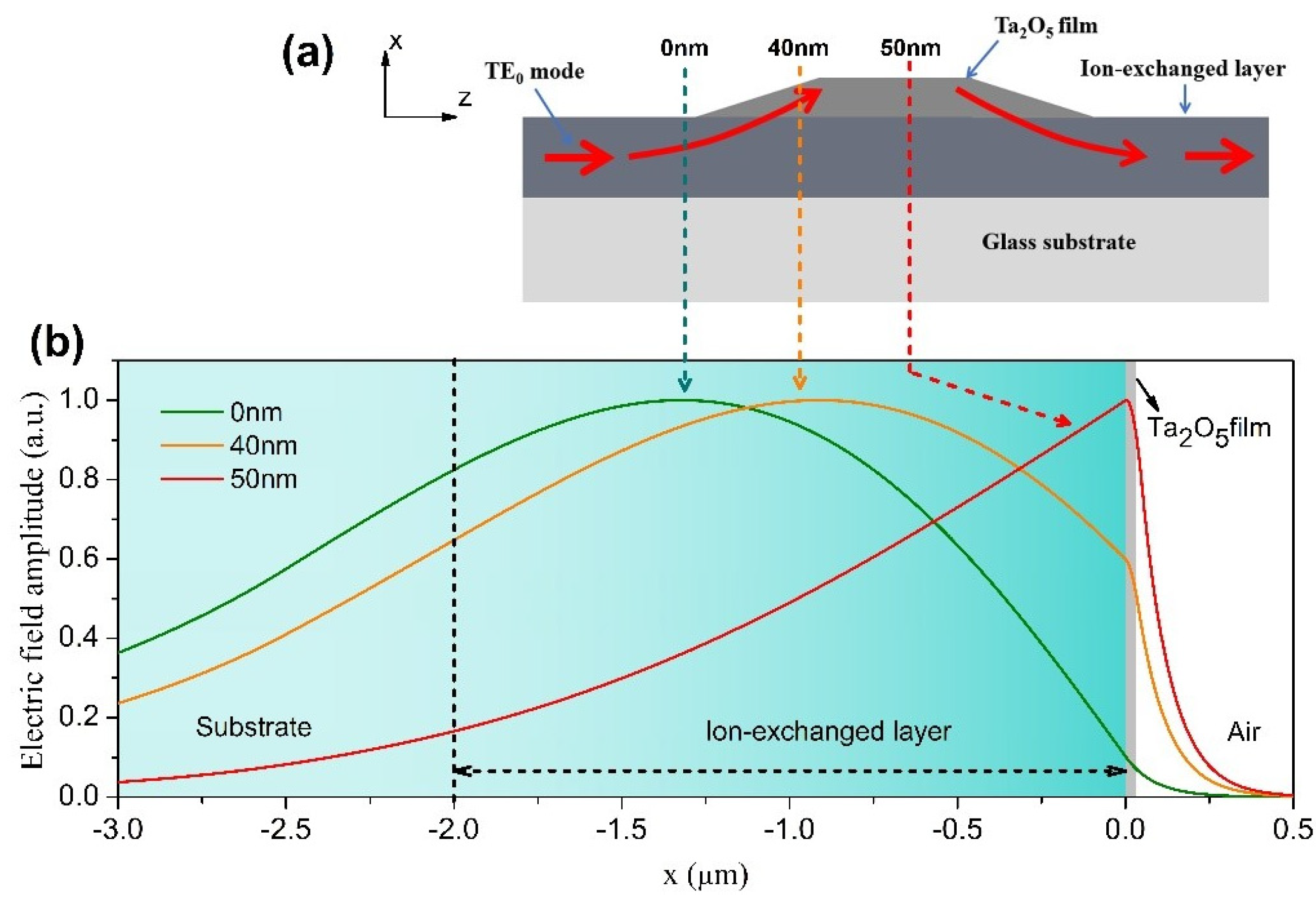
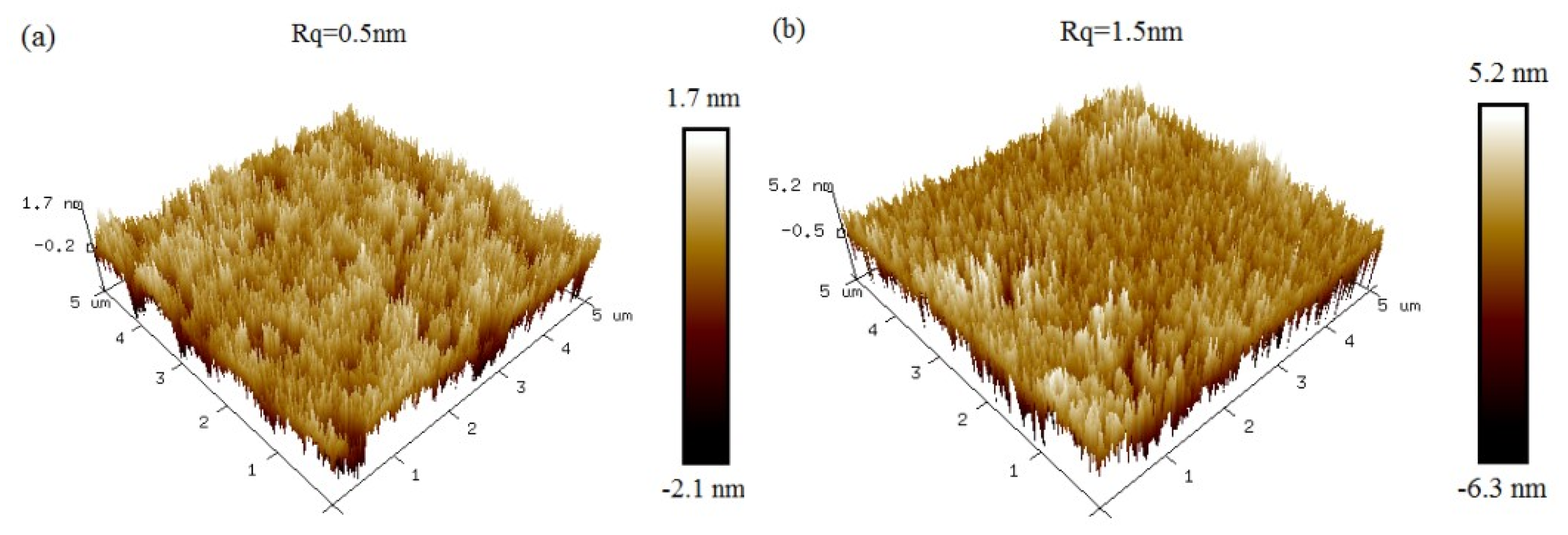

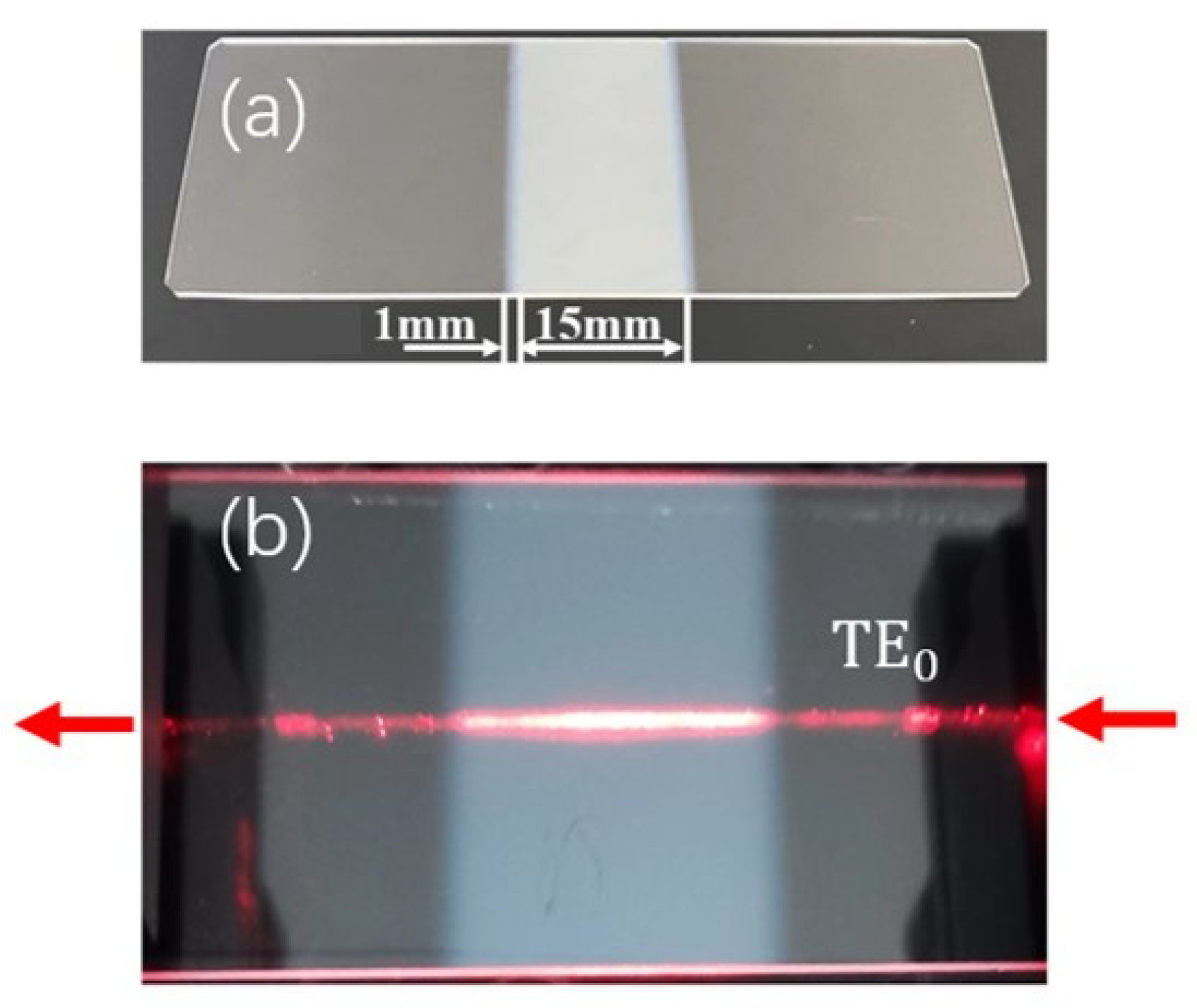

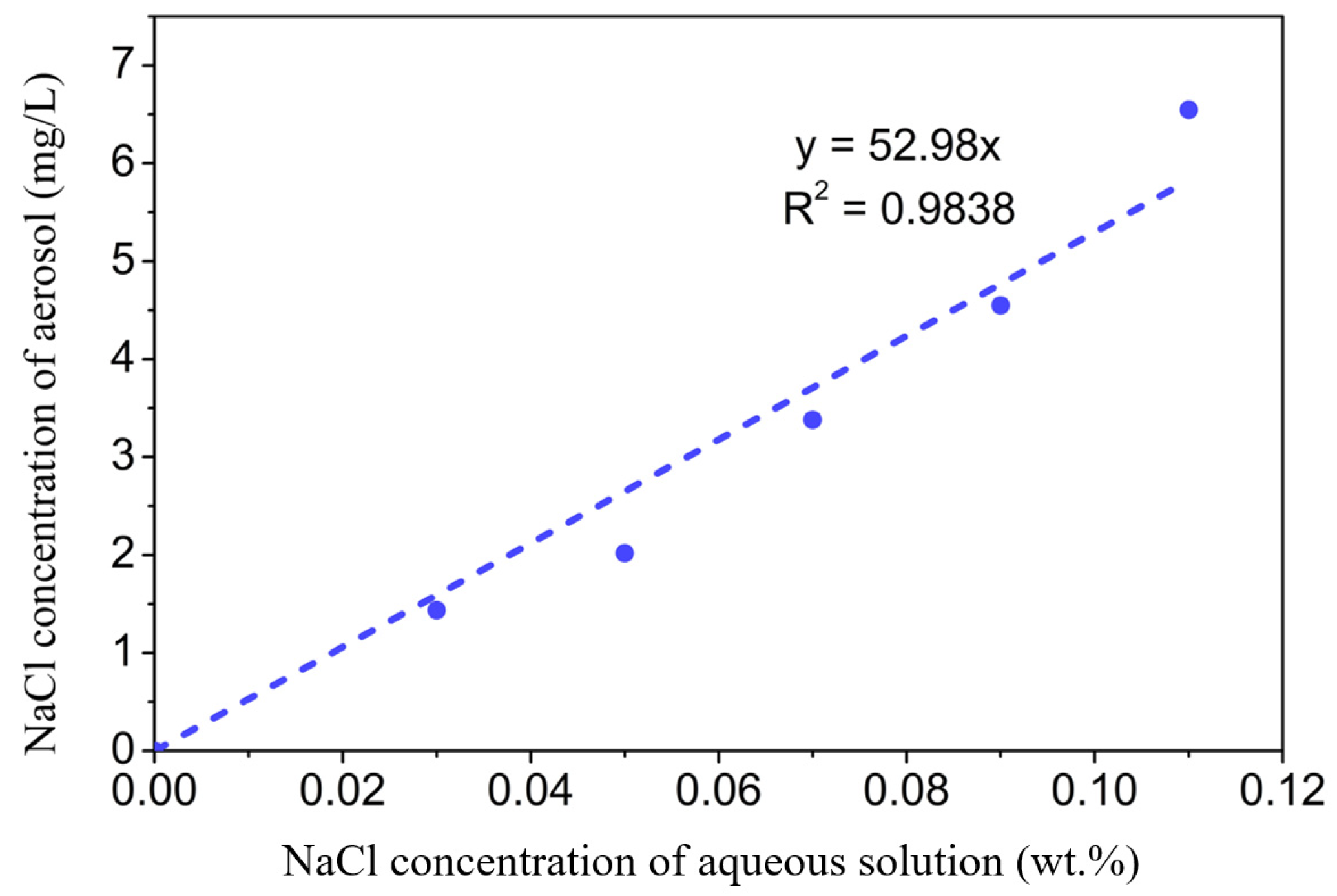

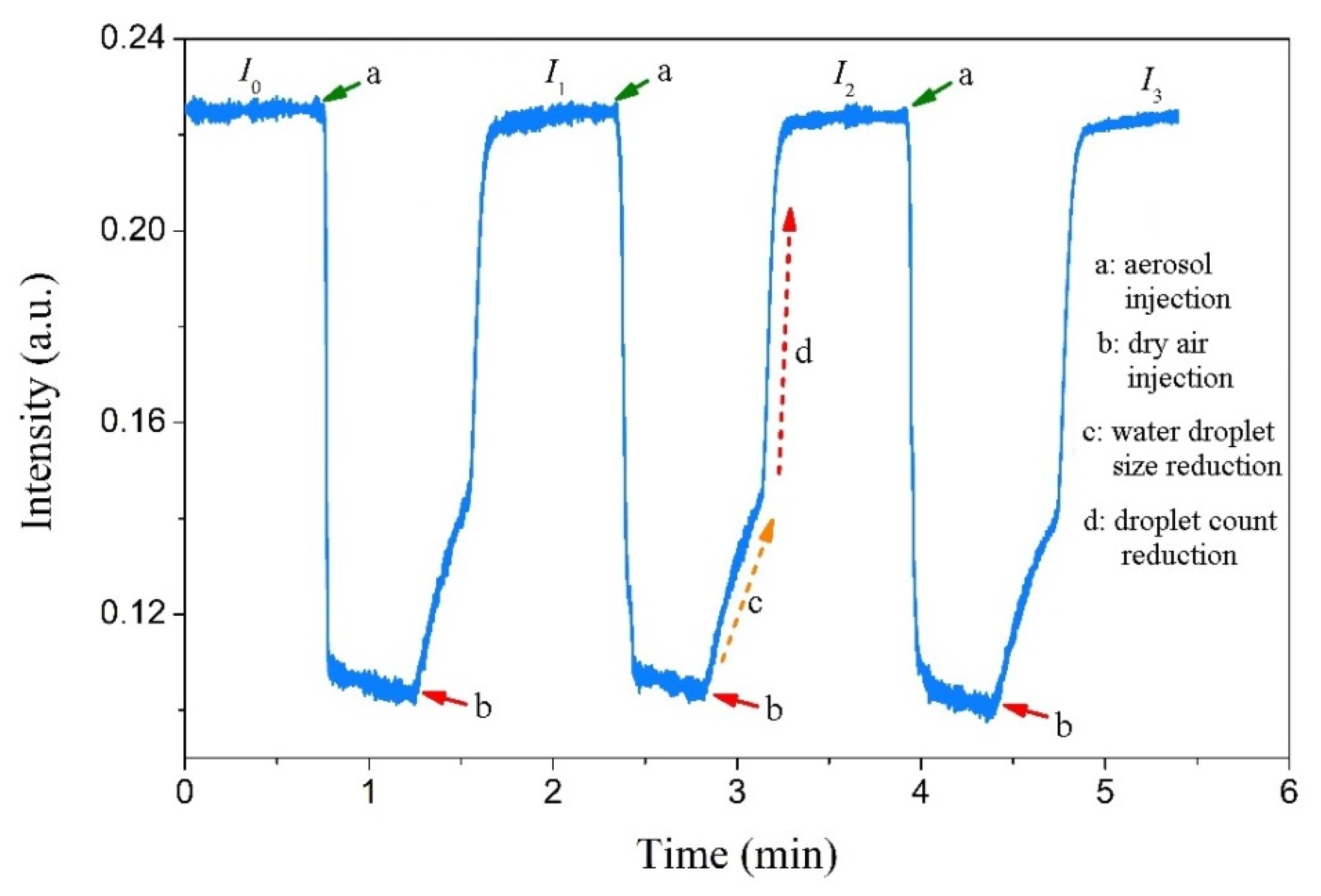

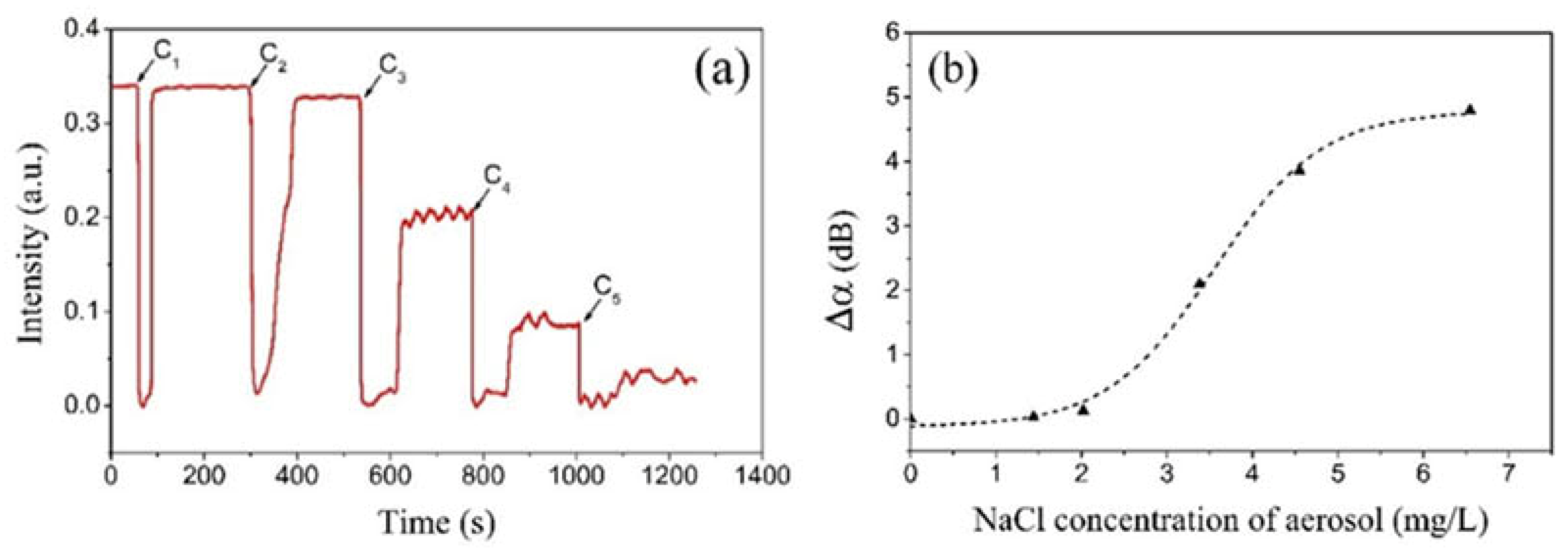
Publisher’s Note: MDPI stays neutral with regard to jurisdictional claims in published maps and institutional affiliations. |
© 2022 by the authors. Licensee MDPI, Basel, Switzerland. This article is an open access article distributed under the terms and conditions of the Creative Commons Attribution (CC BY) license (https://creativecommons.org/licenses/by/4.0/).
Share and Cite
Zhao, M.; Tang, H.; Liu, Z.; Tong, Z.; Qi, Z. A Surface-Scattering-Based Composite Optical Waveguide Sensor for Aerosol Deposition Detection. Chemosensors 2022, 10, 535. https://doi.org/10.3390/chemosensors10120535
Zhao M, Tang H, Liu Z, Tong Z, Qi Z. A Surface-Scattering-Based Composite Optical Waveguide Sensor for Aerosol Deposition Detection. Chemosensors. 2022; 10(12):535. https://doi.org/10.3390/chemosensors10120535
Chicago/Turabian StyleZhao, Min, Hongyi Tang, Ziwei Liu, Zhaoyang Tong, and Zhimei Qi. 2022. "A Surface-Scattering-Based Composite Optical Waveguide Sensor for Aerosol Deposition Detection" Chemosensors 10, no. 12: 535. https://doi.org/10.3390/chemosensors10120535
APA StyleZhao, M., Tang, H., Liu, Z., Tong, Z., & Qi, Z. (2022). A Surface-Scattering-Based Composite Optical Waveguide Sensor for Aerosol Deposition Detection. Chemosensors, 10(12), 535. https://doi.org/10.3390/chemosensors10120535




